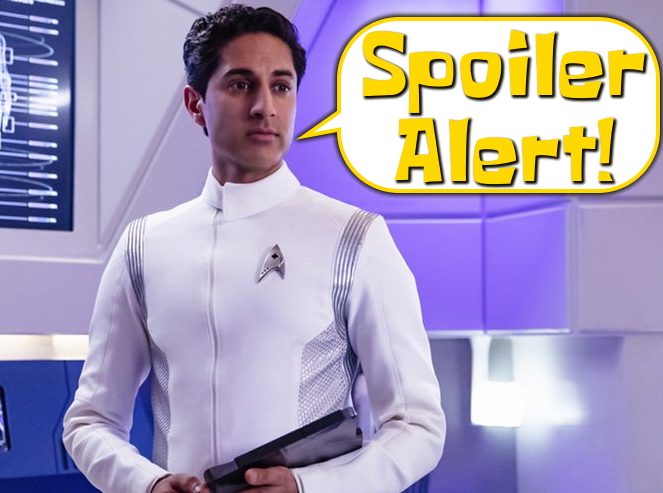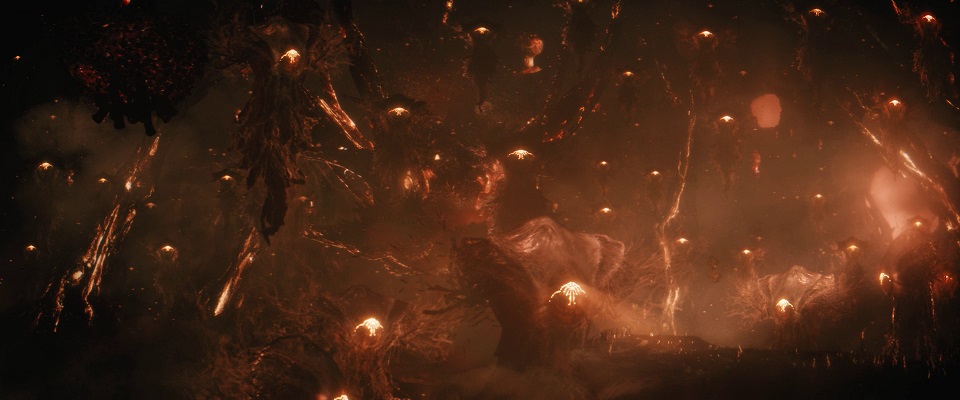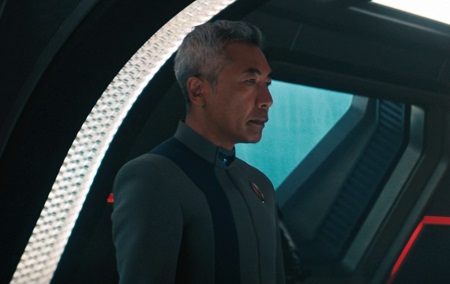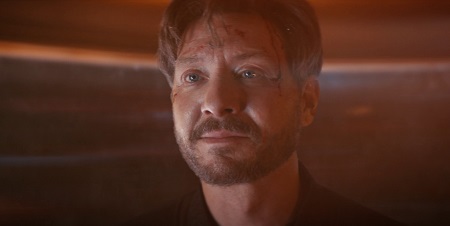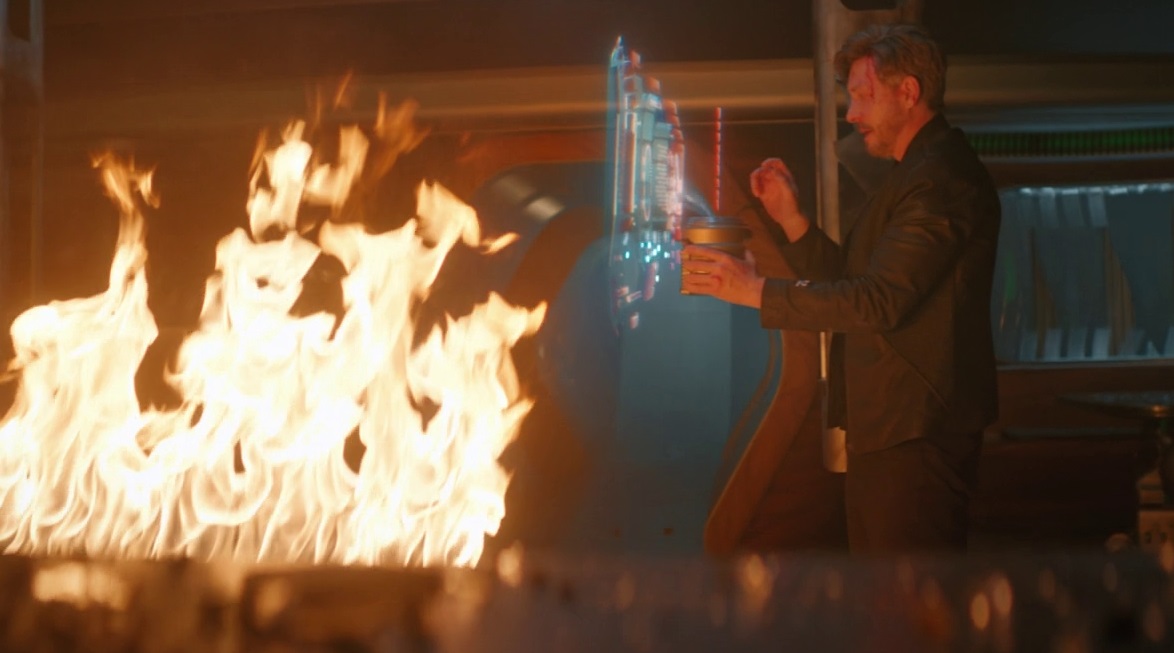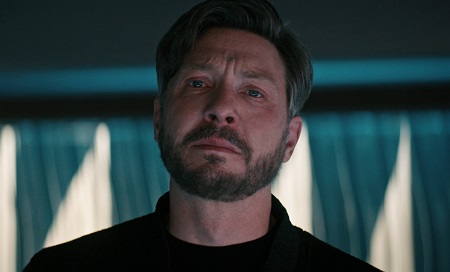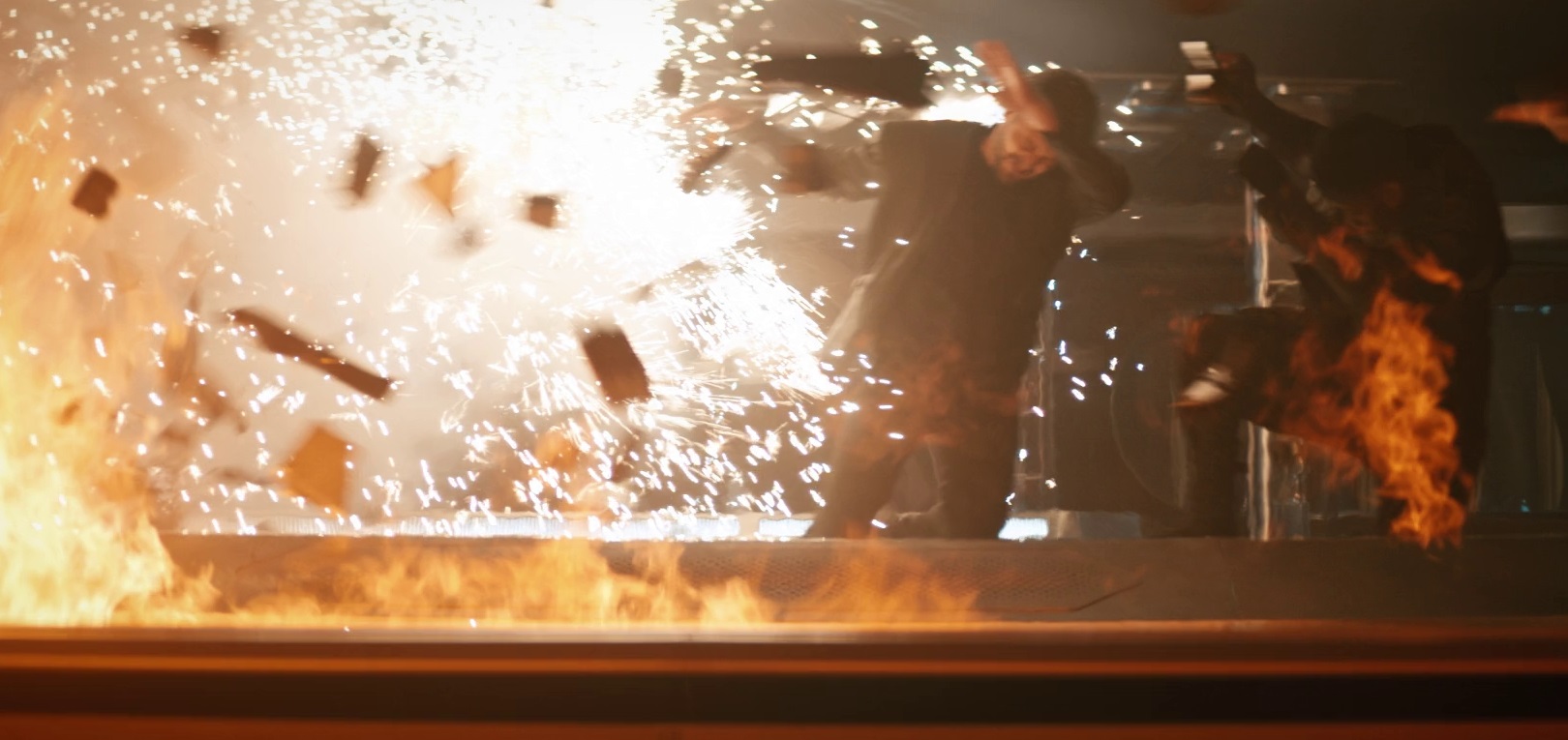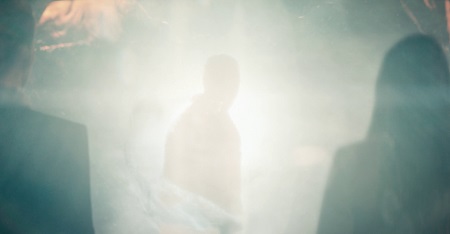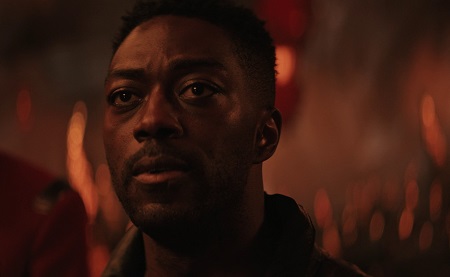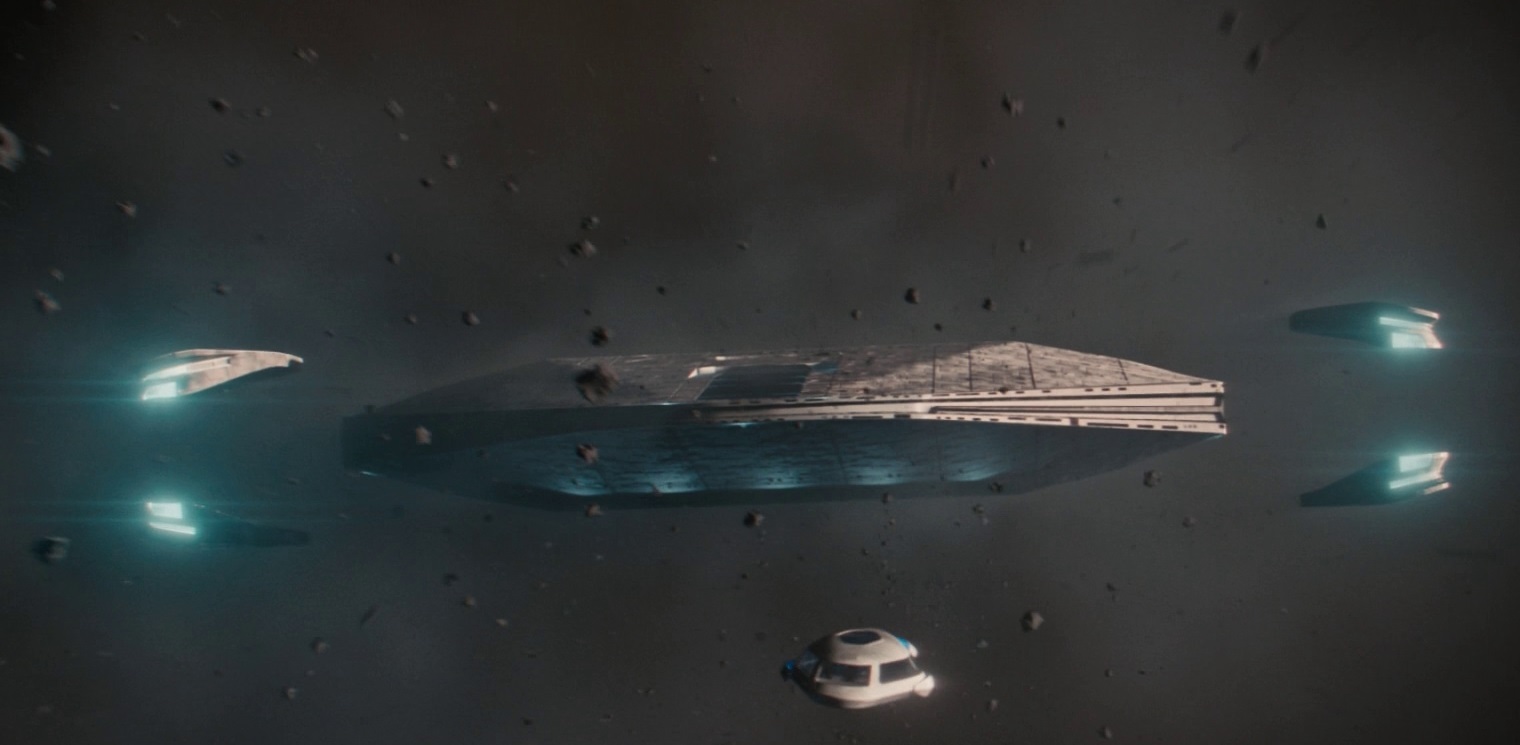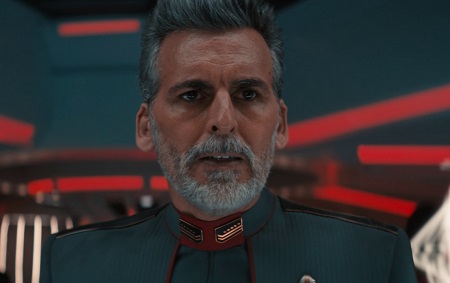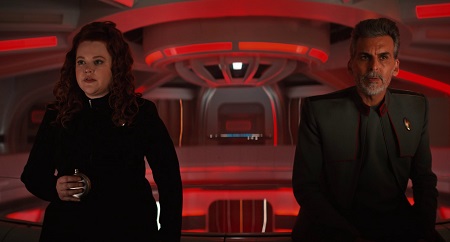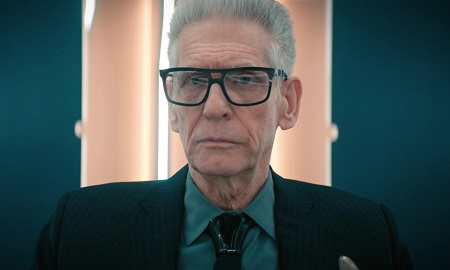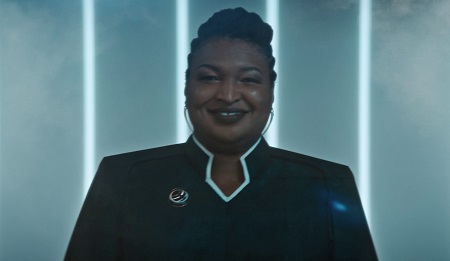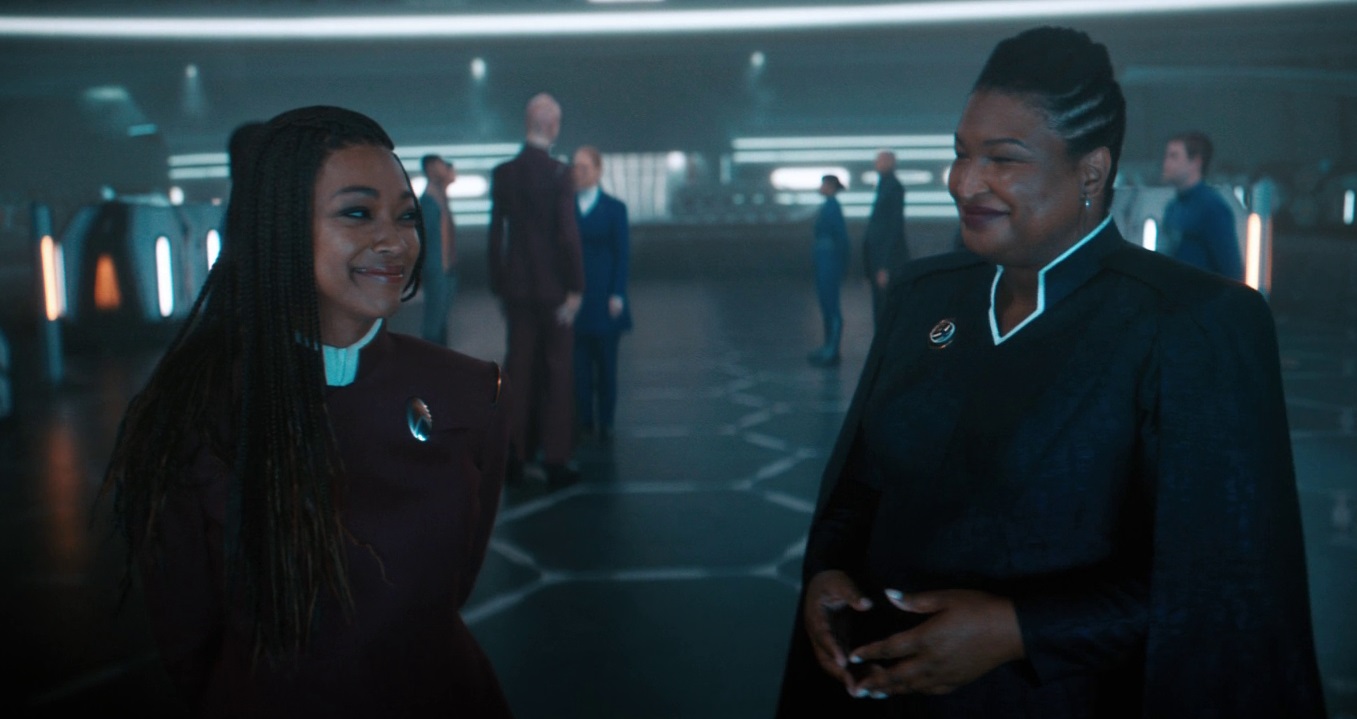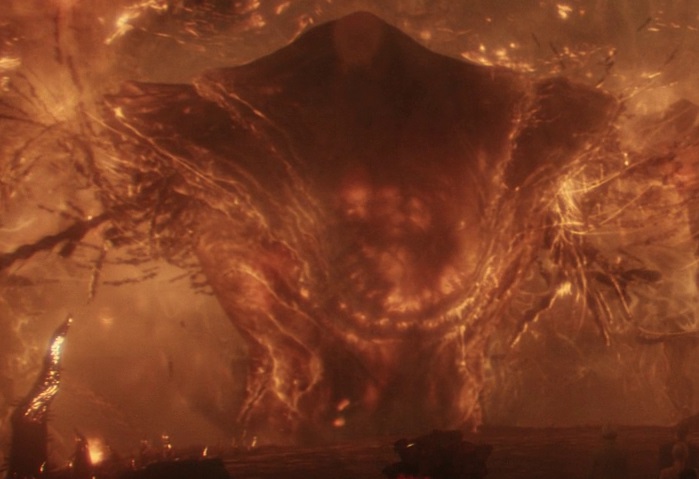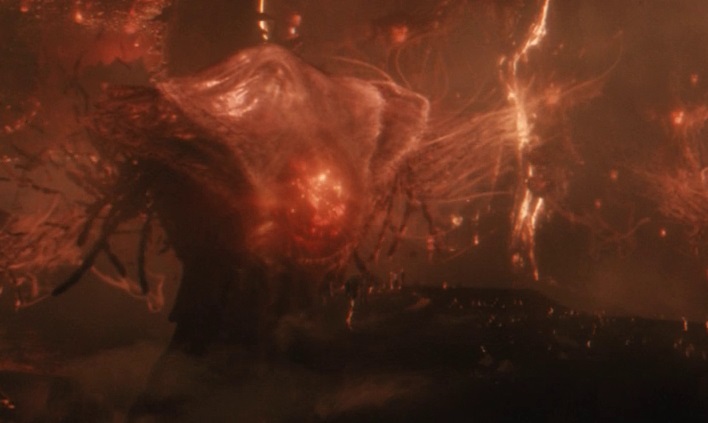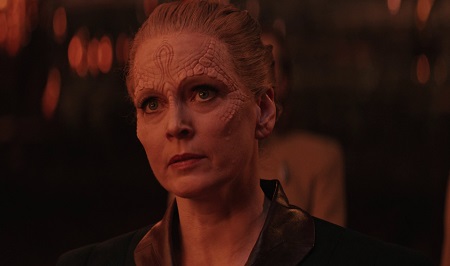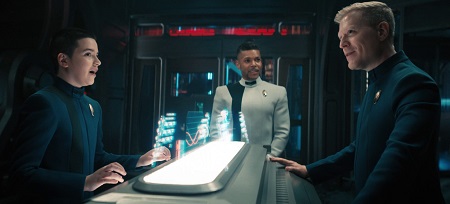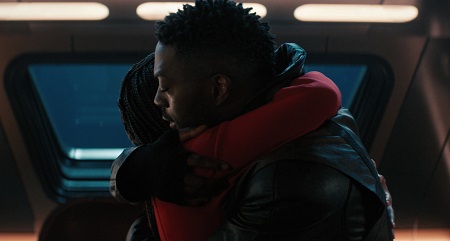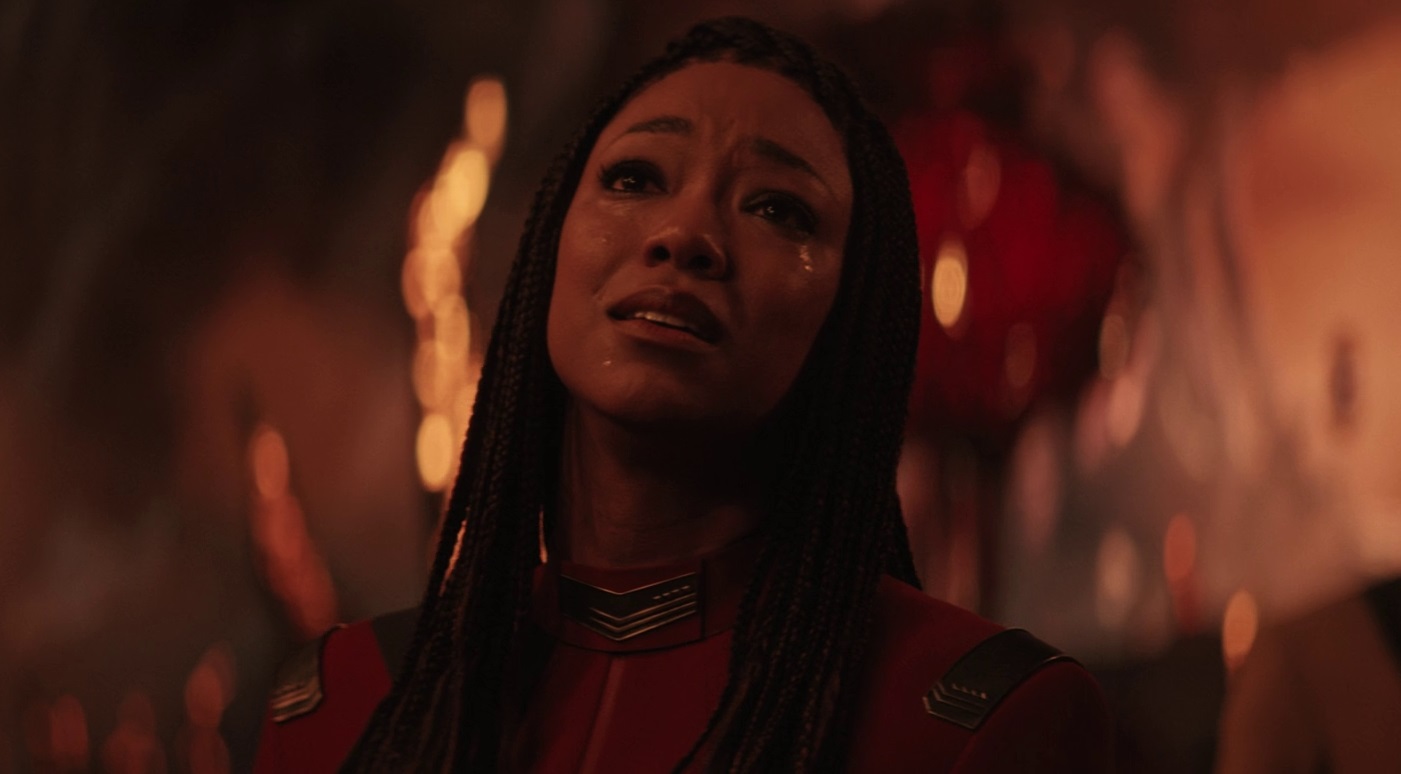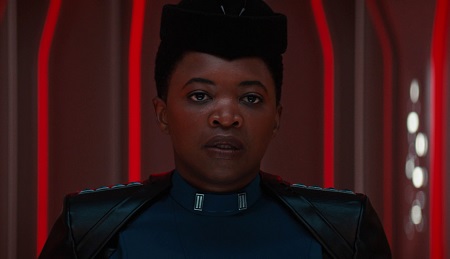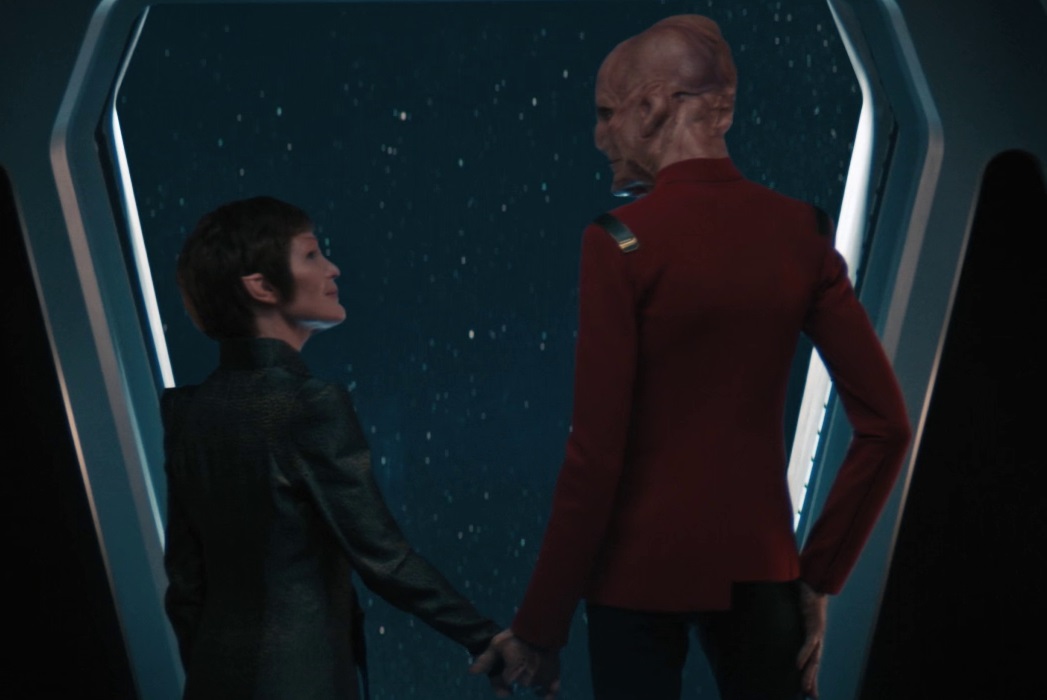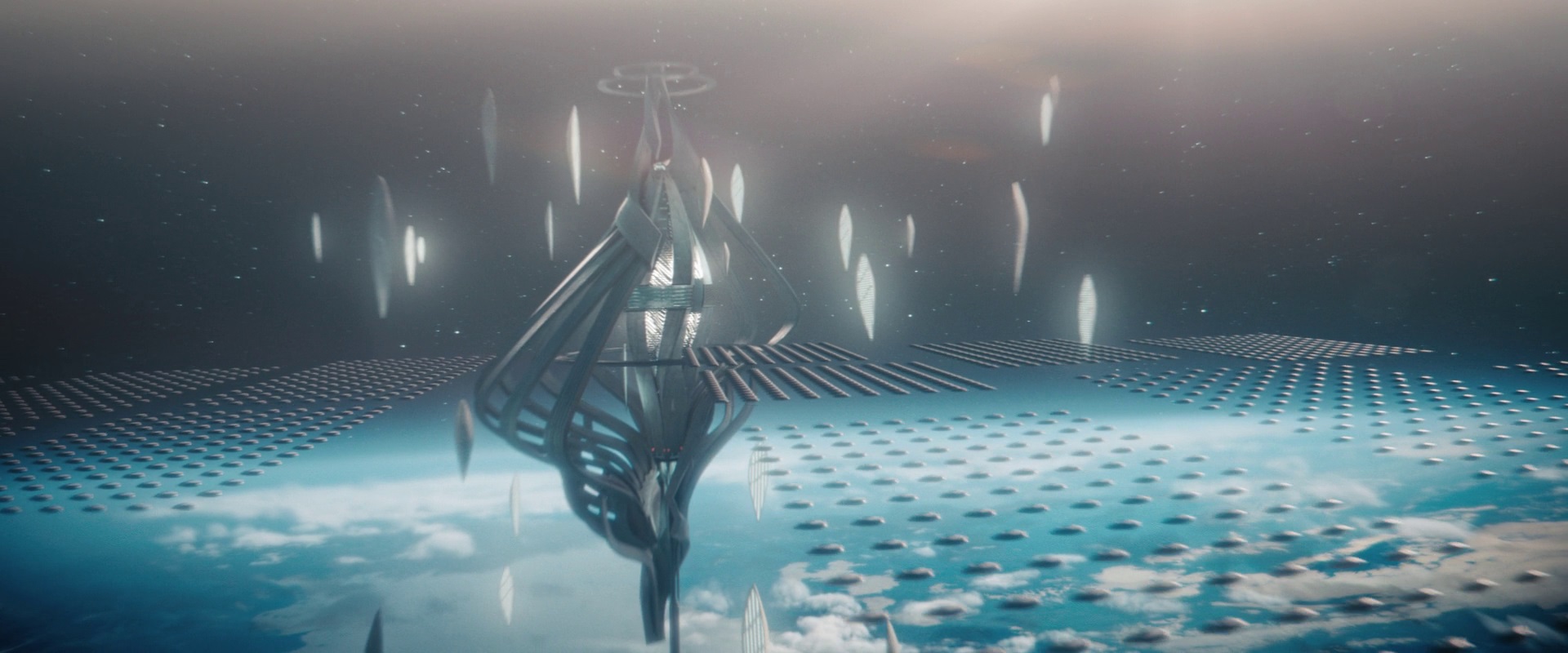
Spoiler Warning: There are spoilers ahead for the Star Trek franchise, including all episodes on this list. Spoilers are present for the following: Discovery Season 4, Picard Season 3, Prodigy Season 1, Strange New Worlds Season 1, and more.
So, I did a thing. A few days ago, I published a tongue-in-cheek list of what I consider to be some of the worst episodes in the Star Trek franchise. Since it went up, it’s been racking up clicks – almost immediately becoming the most-viewed piece on the website over the past few days. To balance out that list – and to claw back some of my standing as a Trekkie – I thought I shouldn’t wait any longer before writing the counterpoint!
As I said last time, I’m a huge Star Trek fan. Heck, I run a Star Trek-themed website – so obviously I like the franchise! But I’m not one of those fans who says that “everything Star Trek has ever done is perfect,” nor am I someone who wants to whitewash Star Trek and never mention the bad parts. Paramount has a marketing team to do that.

So today, as a counterpoint to my last list, I’m going to pick twenty of my absolute favourite episodes. It should go without saying that this list is also entirely subjective, so if I exclude your favourite episode or you hate all of my picks… that’s okay! We’re all entitled to our preferences about which Star Trek stories we prefer, and there should be enough room within the Star Trek fan community for polite discussion and disagreement.
So without any further ado, let’s dive into the list!
Episode #1:
The Doomsday Machine
The Original Series Season 2
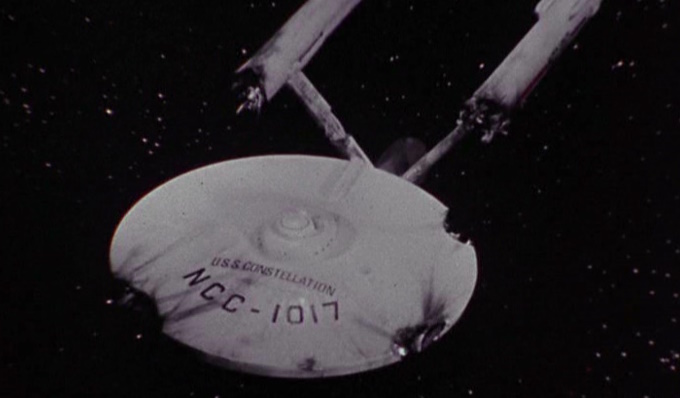
The Doomsday Machine is, in some respects, The Original Series in microcosm. It has everything that fans loved about the show: an exciting sci-fi premise, an incredible guest star, and a hard-hitting real-world comparison. It’s always stood out to me as one of The Original Series’ finest outings, masterfully building up tension as the unmanned weapon mindlessly carries out its directive.
The character of Commodore Decker, who was created for The Doomsday Machine, is one of the show’s most brilliant and tragic characters. His story has always been an absolutely riveting one for me – and the performance by guest star William Windom is phenomenal. The Doomsday Machine had a point to make about nuclear weapons out here in the real world, too – and coming at the height of the Cold War, less than six years after the Cuban Missile Crisis, it could hardly be more timely.
Episode #2:
Coming Home
Discovery Season 4

Discovery’s fourth season – like its predecessors – took a meandering and occasionally frustrating route to reach its final episode… but it was more than worth the wait! Coming Home is fantastic, and encapsulates everything that Star Trek is and always has been. There were incredibly tense and exciting moments as the Federation leapt to the defence of Earth, which was in serious danger, but those moments were coupled with the discovery of a very new and different alien race.
Seeking out new life has been at the heart of Star Trek since its inception. But, as many have pointed out over the years, Star Trek’s “new life” could often look and act very, well, human. Species 10-C, which we finally got to meet in this episode after a season-long buildup, have to be one of the most strikingly different aliens ever created for the franchise. Above all, though, Coming Home excels for its sense of optimism and hope. I’d challenge even the most ardent Discovery-avoider to give it a try.
Episode #3:
The Siege of AR-558
Deep Space Nine Season 7
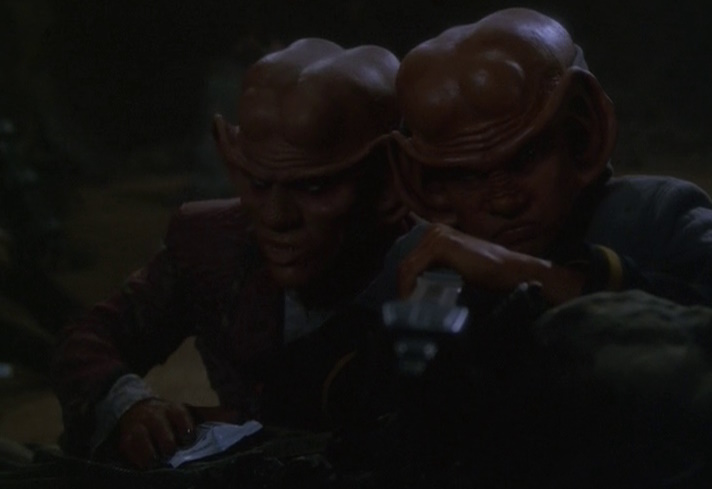
Few Star Trek episodes truly manage to capture the feel of being at war quite so dramatically and spectacularly as The Siege of AR-558. Director Winrich Kolbe drew on his own experiences in the Vietnam War to create a claustrophobic, frightening scenario in which Federation soldiers were fighting for their lives over a nameless lump of rock. The futility of war is on display in The Siege of AR-558 in a way that Star Trek has seldom touched upon.
Nog’s character arc is one of Deep Space Nine’s best, and this episode shows why. Nog went from petty thief to Starfleet hero over the course of seven seasons, and the life-changing injury he suffered in the battle on the planetoid AR-558 would be a defining moment for him. The Siege of AR-558 is an episode that challenges many of our assumptions and beliefs about the Federation, Starfleet, and the Dominion War – and it’s an absolutely incredible watch.
Episode #4:
First First Contact
Lower Decks Season 2

First First Contact is Lower Decks at its very best. It’s a Star Trek story through-and-through, with a challenge befalling the crew of the Cerritos that’s of a scientific and engineering nature. It’s also the perfect example of how Star Trek can tell tense and exciting stories without the need for evil villains and big set-piece battles.
Lower Decks often operates with a two-story or even three-story structure, pairing up characters and setting them off on their own adventures. But First First Contact is a comparatively rare example of the entire crew working together and taking part in the same storyline – and it works incredibly well. There are moments of high drama, tension, and emotion as the Cerritos races to save a stricken Federation starship and an uncontacted planet – and a moment of engineering genius that would rival anything Scotty or Geordi could’ve come up with!
Episode #5:
Disaster
The Next Generation Season 5

I consider Season 5 to probably be The Next Generation’s strongest overall outing, so Disaster really is the cream of the crop! This is an episode in which every main character gets to play a role in one large, connected story – but it’s a story that throws everyone far outside of their comfort zones and usual roles! The situations the characters find themselves in are tense, dramatic, and occasionally comical, because Disaster really is an episode that has it all!
The basic premise of the episode sees the Enterprise-D damaged, without power, and adrift. Troi is the senior officer on the bridge, being advised by Ro and O’Brien. Data and Riker rush to engineering to try to bring power back to the ship. Picard is stuck in a turbolift with three frightened children (his own personal hell). Worf must take care of civilians in Ten-Forward. And Dr Crusher and Geordi are trapped in a cargo bay. Everyone gets their moment in the spotlight, making Disaster a genuine ensemble piece.
Episode #6:
Vanishing Point
Enterprise Season 2
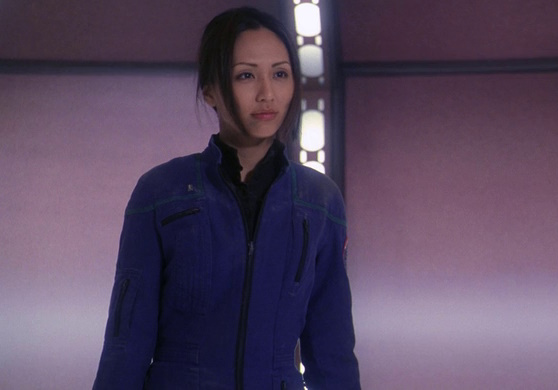
Although Vanishing Point’s ending is pretty cheap and uninspired, the episode itself is a truly interesting exploration of one of Star Trek’s best-known pieces of technology: the transporter. We’ve seen characters like Dr McCoy being averse to the transporter, and more transporter accidents than I can call to mind! But Vanishing Point steps back in time to when the technology was new and untested, and places Hoshi Sato at the centre of its story.
Ensign Sato was such a great point-of-view character, as her nervousness and anxiety at being out in space had already been well-established. Vanishing Point also took Hoshi outside of her usual role as communications officer, allowing her to take centre-stage in a different kind of story. Although the ending drags it down somewhat, Vanishing Point is nevertheless a ton of fun!
Episode #7:
A Quality of Mercy
Strange New Worlds Season 1

Season 1 of Strange New Worlds is fantastic across the board, without so much as a single bad episode! It was difficult to pick just one for this list, but I’ve decided to go with A Quality of Mercy. This episode gets time travel just right, with Captain Pike dealing with himself from an alternate future timeline in which he avoided his devastating accident and disability. Time travel can be tricky to pull off, but A Quality of Mercy manages it.
The episode also returns to the classic story Balance of Terror, showing us an alternate outcome to the battle between Kirk and the Romulan Commander. This gives it the feel of a story “made for fans,” and Trekkies who’ve followed the franchise for a long time will surely find a lot to love here. At the core of it all is Captain Pike, a character who I find incredibly relatable. Knowing that one’s health is in decline and seeking to make a “deal with the devil” to find a solution… I’ve been there. And Anson Mount plays the whole thing – and the roles of two different Pikes – incredibly well.
Episode #8:
Equinox Parts I and II
Voyager Season 5-6

Voyager’s fifth season ended in stunning fashion with the first part of Equinox. I was hanging on for months waiting for Part II, which brought the story to an explosive conclusion. After years lost in the Delta Quadrant, Captain Janeway and the crew finally encounter another Federation vessel – and another crew who understand what they’ve gone through. But all is not what it seems, as it turns out that the aliens attacking the small USS Equinox are actually in the right.
Equinox is a challenging episode, condemning Captain Ransom’s actions while also presenting him and (most of) his crew in a relatively sympathetic light. It’s an episode that hammers home how lucky Janeway and the crew of Voyager have been – comparatively speaking – and shows the extremes that people can be willing to go to in order to survive.
Episode #9:
The Star Gazer
Picard Season 2

I debated for a long time whether I wanted to include The Star Gazer on this list. The story that it so brilliantly set up went off the rails pretty quickly in subsequent episodes, and Picard’s second season is, overall, a disappointment. But on its own, The Star Gazer is actually a pretty great episode, one that re-introduces one of Star Trek’s classic villains in a new and terrifying manner.
If the rest of Picard Season 2 had been anywhere near as good as The Star Gazer, it would be one of the best in the entire franchise! As it is, this episode almost feels like an alternate timeline, showing us what might have been! Regardless, though, it sets up a tantalising mystery, teases us with some serious development for some of the show’s supporting characters, and contains one of the best and most frightening clashes between Starfleet and the Borg that the Star Trek franchise has ever created.
Episode #10:
Homefront and Paradise Lost
Deep Space Nine Season 4
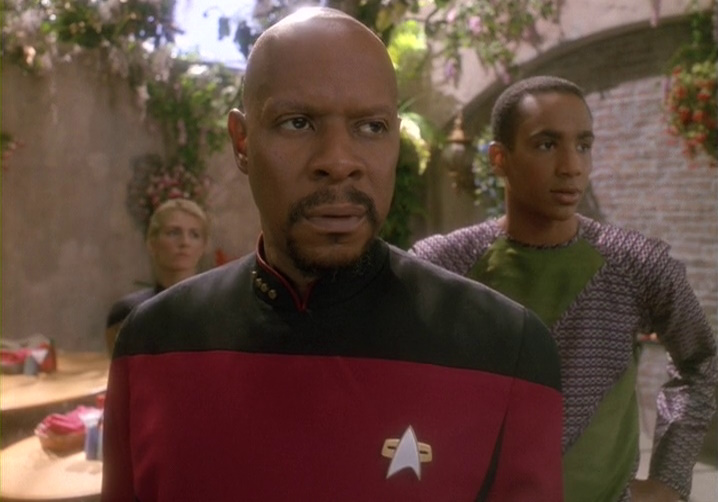
Deep Space Nine had done things differently from its very first episode, and some fans weren’t wild about its darker tone. This shift away from the Federation and Starfleet being presented as an incorruptible and enlightened paradise was on full display in this pair of episodes. In between the discovery of the Dominion and the official outbreak of war, the Federation was terrified of changeling infiltrators. Feeling that politicians and bureaucrats weren’t up to the task, a renegade “badmiral” plots a coup.
Some early Star Trek stories could present the Federation as almost too perfect, and this continued into The Next Generation era. What Captain Sisko and Odo had to confront here was the idea that Starfleet officers could themselves fall prey to paranoia, corruption, and ego – and this very human reaction to the threat of infiltration felt quite relatable. Although we’re firmly on Sisko’s side, Homefront and Paradise Lost throw some moral ambiguity into the mix thanks to some complex writing and several outstanding guest stars.
Episode #11:
The Royale
The Next Generation Season 2
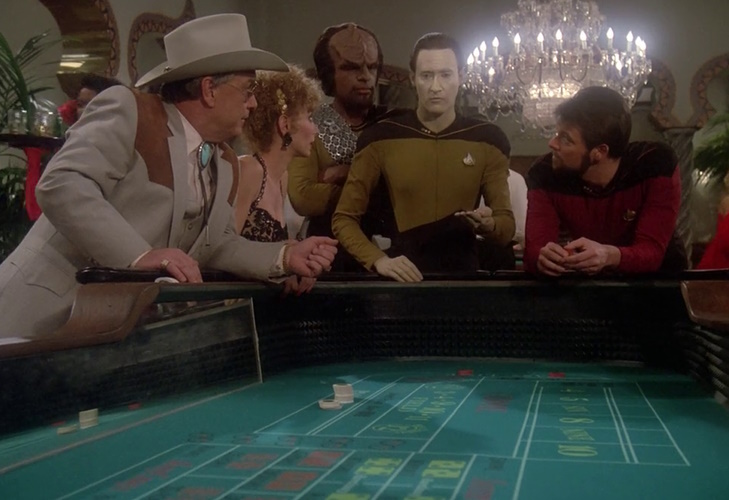
I confess that I have a soft spot for The Royale for one principal reason: it’s the earliest episode of Star Trek that I can remember watching! Although I’m sure I’d seen at least parts of other episodes prior to The Royale’s broadcast on terrestrial TV here in the UK in 1991, this is the first one I have rock-solid memories of, and it’s always carried special significance as a result. So that’s my own bias stated up front!
Bias aside, though, I think there’s a lot to enjoy in this episode. It’s the kind of story that no other sci-fi franchise would attempt, and it has an unusual and somewhat eerie feel. Imagine having to spend the rest of your life trapped in an alien recreation of a three-star hotel! That seems like a very specific kind of hell, putting a dark spin on what could’ve been a purely comical story. The idea of roaming to the farthest, unexplored reaches of space only to find an Earth hotel and a mystery is part of what made Star Trek stand out to me, and seeing Riker and the away team solve the puzzle is still an engaging watch more than three decades later!
Episode #12:
Through the Valley of Shadows
Discovery Season 2
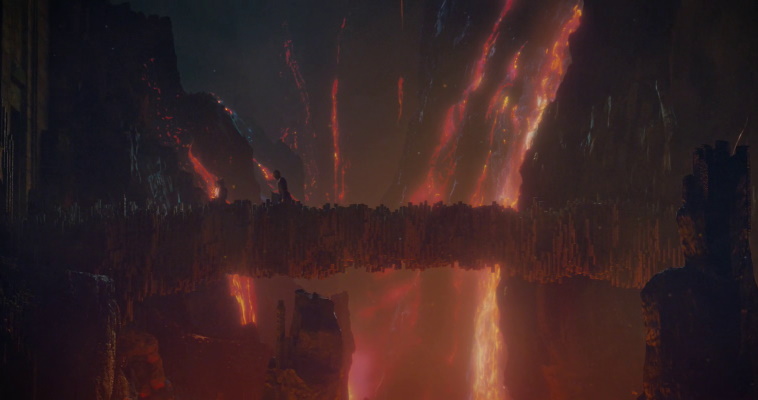
Through the Valley of Shadows reframes Captain Pike and the accident that left him disabled. The Menagerie, from the first season of The Original Series, showed us the aftermath of what happened to Pike, as well as introduced us to the character and his time in the captain’s chair. Through the Valley of Shadows took that idea to a completely new and different thematic place: Captain Pike had to choose this future for himself, making an unimaginable sacrifice in order to complete his mission and save untold numbers of lives.
We looked at one consequence of that above with the Strange New Worlds episode A Quality of Mercy. These two episodes make a fascinating pair, and the tragedy of Captain Pike takes on a whole new dimension in light of what we learn here. Pike has always been a character I find incredibly relatable, and Through the Valley of Shadows puts a distinctly “Star Trek” spin on the idea of seeing one’s own future – and knowing that illness, disability, and worsening health lie ahead.
Episode #13:
Court Martial
The Original Series Season 1

Court Martial is Star Trek’s first foray into courtroom drama – a genre that the franchise would return to on multiple occasions! Captain Kirk is accused of murdering an officer under his command and attempting to cover it up, and the stakes are high! We know he couldn’t possibly be guilty, of course… but the evidence against him appears to be compelling.
Samuel T. Cogley – Kirk’s advocate – is a character I’d absolutely love modern Star Trek to revisit! Based on the “old country lawyer” character archetype, Cogley led Kirk’s defence in unorthodox fashion, and is one of the best parts of Court Martial. Along with The Conscience of the King and Charlie X, which also delve into Kirk’s backstory, Court Martial puts flesh on the bones of someone who was still a new character. Kirk’s integrity and honour are on display – and on trial.
Episode #14:
Dragon’s Teeth
Voyager Season 6
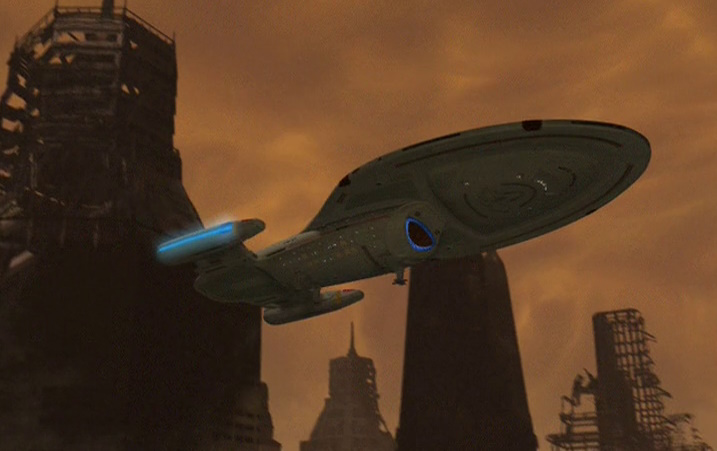
Dragon’s Teeth is an interesting episode, and one that tells us a little about the history of the Star Trek galaxy. It’s also a story that looks at the potential consequences of war and conquest, as well as how different reality can be from societal memory. The crew of Voyager re-awaken a group of aliens who have been in stasis since the 1400s, following a devastating war that culminated in the bombardment of their planet.
The Vaadwaur proved to be untrustworthy allies, however, and attempted to capture Voyager. The “underspace corridors” that were present in this episode weren’t revisited, even though they potentially offered a quicker way to traverse this region of space. The concept was fun, though, and reviving a long-dormant race was likewise an interesting and well-executed idea.
Episode #15:
The Andorian Incident
Enterprise Season 1

I have to hold up my hands and confess that I wasn’t a big supporter of Enterprise during its original run. I was disappointed in its choice of setting, believing that Star Trek should move forwards instead of looking back at its own fictional history. But episodes like The Andorian Incident show just how wrong I was to feel that way! The episode showcases the conflict between Andoria and Vulcan in the years prior to the founding of the Federation – and begins to set the stage for humanity to bridge the divide and bring them together.
At a Vulcan holy site on the planet P’Jem, a monastery has been attacked by Andorians. The Andorian leader claims the monastery is a front for a listening post. Jeffrey Combs returns to Star Trek after his roles in Deep Space Nine to play Andorian leader Shran, and the interplay between Shran and Captain Archer would be one of Enterprise’s best. All in all, a fascinating outing.
Episode #16:
Where Pleasant Fountains Lie
Lower Decks Season 2

I adore Where Pleasant Fountains Lie. I think it has a potentially-interesting explanation for the abundance of human-looking aliens in the Star Trek galaxy (they’re all Earth colonies), but moreover it touches on a subject close to home for me: asexuality. I’m asexual, and while the Cerritos’ chief engineer Andy Billups isn’t explicitly stated to be asexual in the story, Where Pleasant Fountains Lie focuses in large part on his discomfort with having sex and desire to avoid it.
Star Trek has always used its sci-fi setting to shine a new light on the real world, and for me, this episode absolutely nailed it. When people ask me about asexuality, I now have a relatable story that I can point to, one that touches on many of the same feelings and experiences that I’ve personally had as an asexual individual. I wrote a longer piece about this episode’s asexuality analogy, and you can find it by clicking or tapping here if you’re interested to read more.
Episode #17:
Let Sleeping Borg Lie
Prodigy Season 1

Prodigy had a strong first season – though it’s been disappointingly let down by a lack of support from Paramount, especially in the merchandising department. There are several contenders for episodes to include on this list, but I’ve decided to go with Let Sleeping Borg Lie from the second half of the season.
The episode focuses on a derelict Borg vessel – tying into the story recently seen in Picard’s third season – and gives all of the main youngsters something to do. The episode moves key storylines along, as Prodigy is a surprisingly serialised affair, but it also takes the crew to a different environment. One of the advantages of animation over live-action is the ability to visit different ships and planets every week relatively inexpensively! There are strong themes of sacrifice and friendship that form the emotional core of the story, too.
Episode #18:
Birthright, Parts I & II
The Next Generation Season 6

This story is a fun crossover between The Next Generation and Deep Space Nine, which wasn’t yet ten episodes into its first season. The main story focuses on Worf as he tracks down a hitherto unknown group of survivors of the Khitomer massacre – the event in which his birth parents were killed. The second part of the story in particular focuses on the Klingons and Klingon culture.
I adore a good crossover, and it’s a ton of fun to see Picard and Dr Crusher aboard DS9, as well as Data and Dr Bashir working together. This episode was designed to give Deep Space Nine a jump-start as its first season got underway, but it’s more than that. It’s a fantastic combination of characters and settings that expands Star Trek beyond a single series into a connected franchise.
Episode #19:
State of Flux
Voyager Season 1
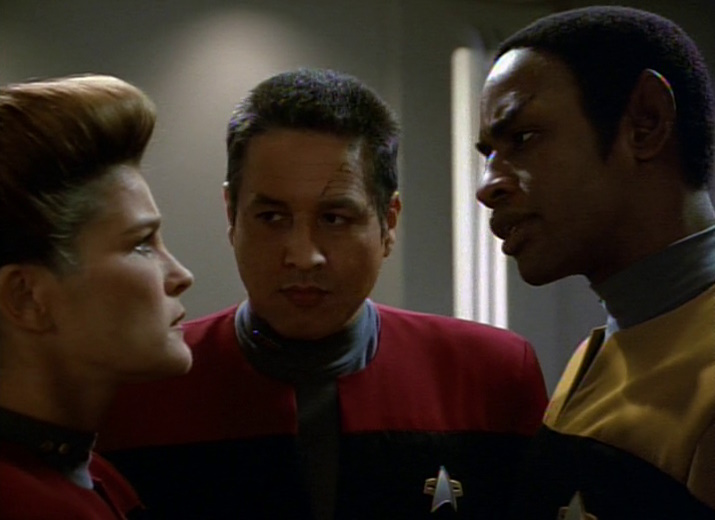
Voyager never managed to make good on its “one ship, two crews” idea, and State of Flux, coming midway through the first season, was one of the few episodes to really explore that concept. When the crew of Voyager come to suspect that someone is passing secret information to the Kazon, a trap is laid – and a member of Chakotay’s Maquis sect is the prime suspect.
This episode set up a recurring story that would come back in Season 2 and at the beginning of Season 3, giving Voyager at least some consistent themes across the first part of the crew’s journey home. It’s also an engaging mystery on its own merit, and a strong episode for Chakotay – a character who could feel under-used, especially toward the latter part of the show’s run.
Episode #20:
Civil Defense
Deep Space Nine Season 3
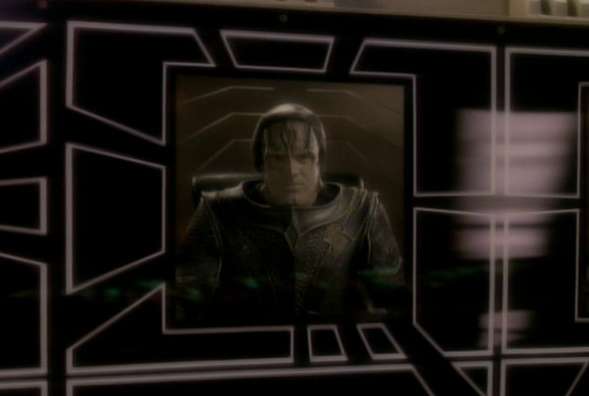
Despite a station-threatening premise, Civil Defense is a remarkably fun episode! It takes the premise of occupying an alien space station to a completely different place than almost any other story in the series, as O’Brien accidentally triggers a computer programme designed to put down a rebellion by the Cardassian station’s former Bajoran workforce.
Civil Defense gives most of the show’s main characters – including Jake Sisko – something to do, putting together groups or pairs of characters who always work well together and provide a ton of entertainment. Quark and Odo help to keep things light – and so does Dukat, to an extent, when he arrives to offer his “assistance!” All in all, an exciting and surprisingly fun outing.
So that’s it!

We’ve taken a look at twenty fantastic Star Trek episodes from across the franchise, getting a great mix of modern and older episodes. Hopefully this will help me regain some of my lost standing as a Trekkie after my list a few days ago!
All jokes aside, though, there’s a ton of fun to be had with Star Trek. Put all twenty of these episodes together in a playlist and you’ve got a hugely entertaining Star Trek marathon that will take you from the very beginnings of the franchise in 1966 right the way through to the most recent seasons that have only just been broadcast. It was a blast to go back and revisit all of these wonderful episodes.
The Star Trek franchise – including all series, films, and episodes mentioned above – is the copyright of Paramount Global. This article contains the thoughts and opinions of one person only and is not intended to cause any offence.



